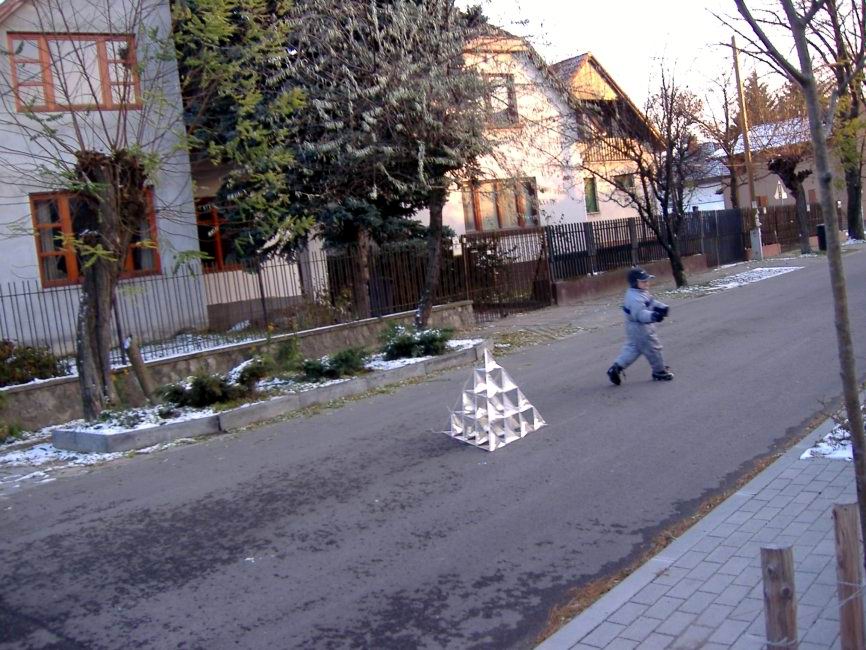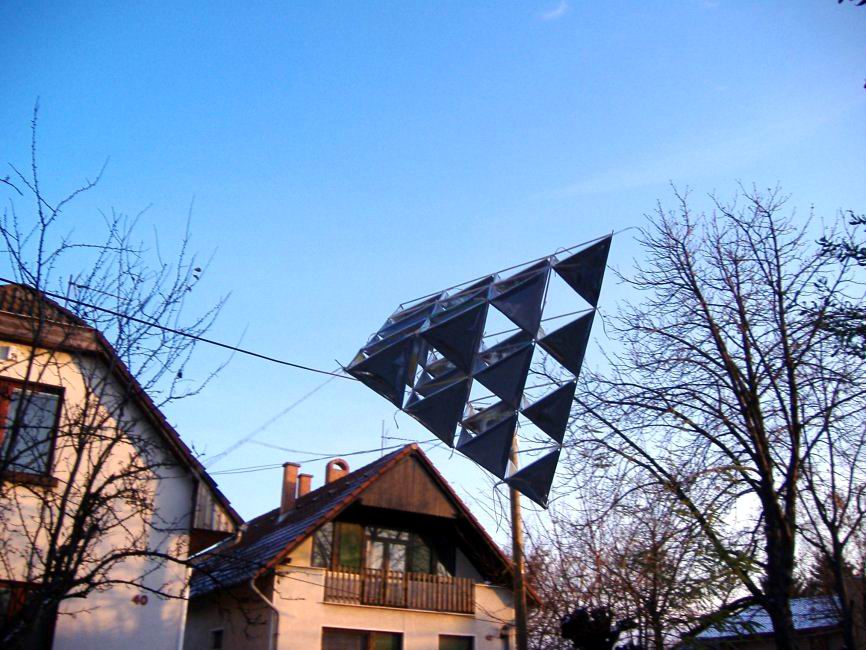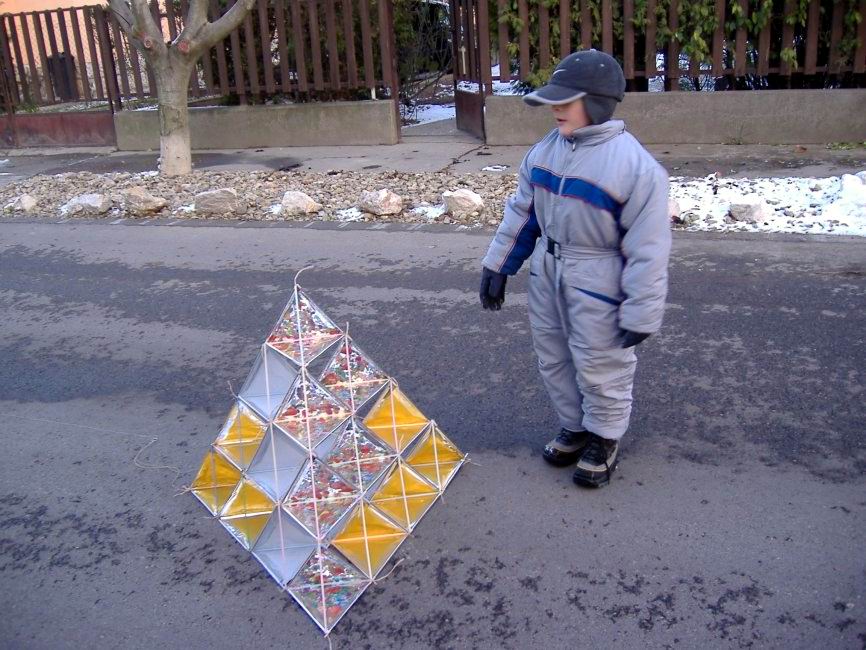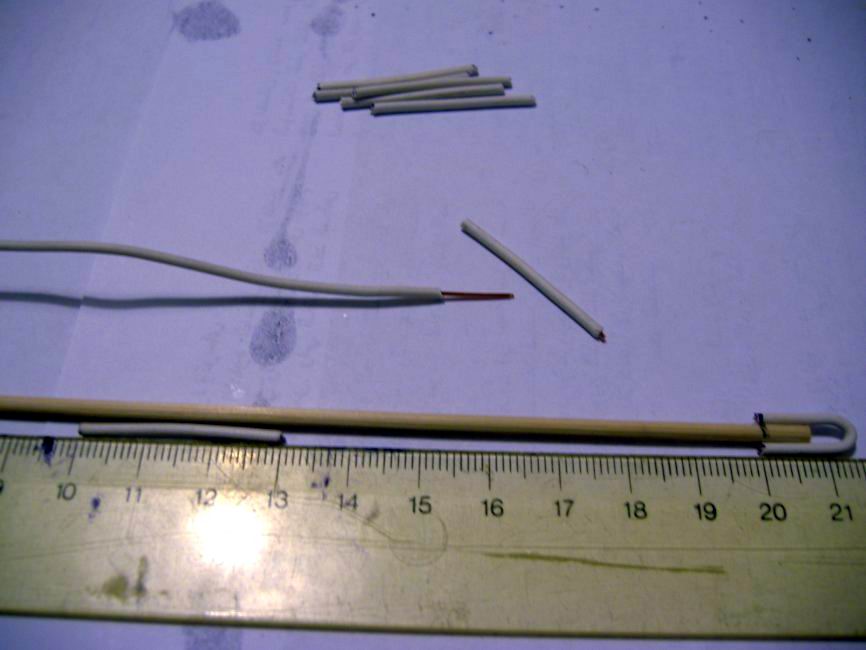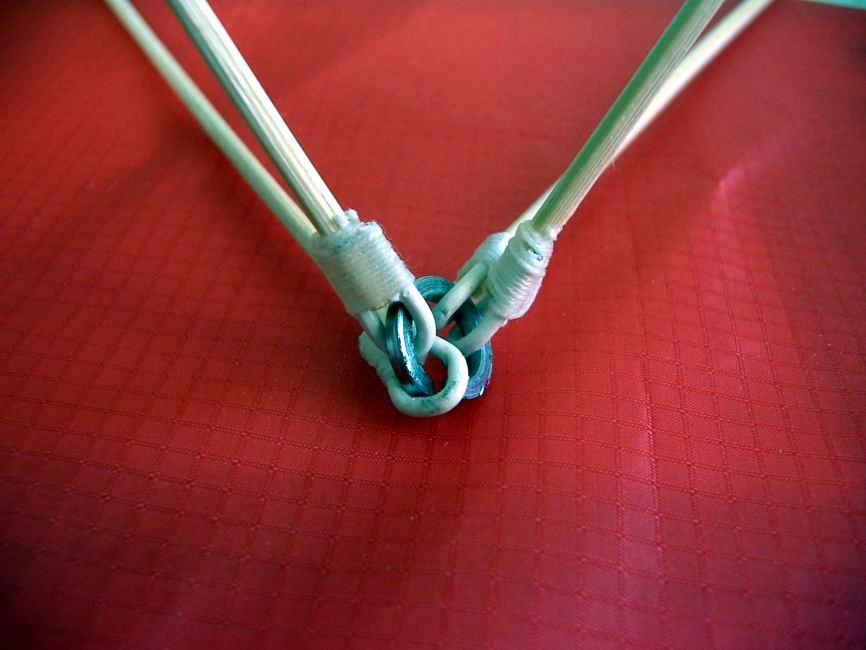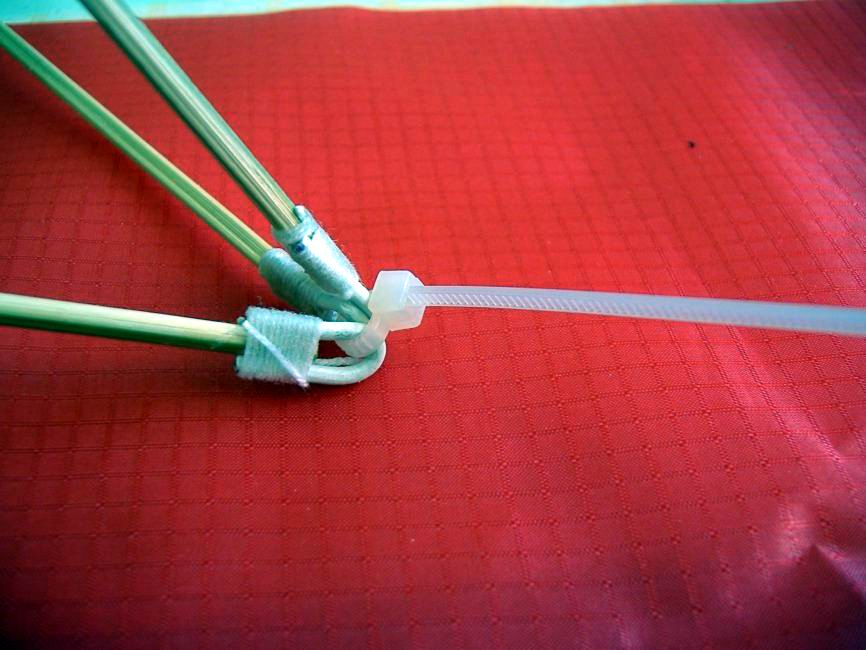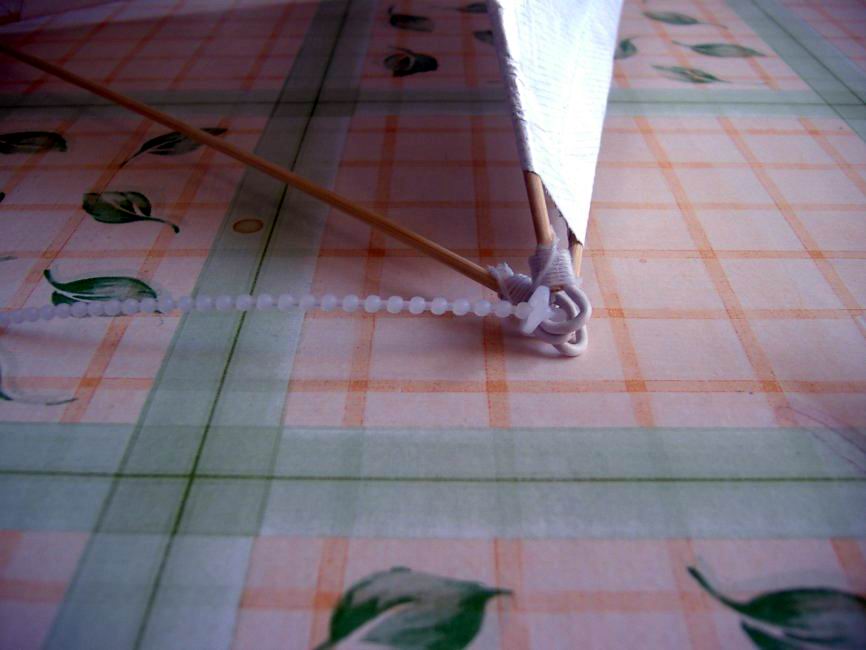TETRAHEDRON KITE
On the 18th January 2006 I finished work on my colapsable 64-cell Bell's (Sierpinski fractal) tetrahedron.I can't remember when I built my first tetrahedron, nor can I remember what it was made of - as to frame or sail.
Here are some pictures of the last but one I've made: frame of inflexible drinking straw, sail of packing paper (various patterns).
The idea to build a colapsable tetrahedron was the next step. Brousing the web I've found http://www.tetralite.com/. For some reasons there were some difficulties to acquire the CD; still I was about to have it: a helping hand came through Ing. Erik Delgado Léon's posting. Though it's in Spanish, it was of great help.
As a result I'm proud to inroduce you my kind of Bell's Tetrahedron, still to be tested; you know it is quite cold here in Budapest, Hungary in this part of the year, and my fingers - while while putting it up - would become frost bitten.
I've tried two or three methods to join the 23.5cm (9 1/4") long piece of bamboo stick taken out of a bamboo blind;
Have a look at this picture: 0.5cm marks at both end of the bamboo stick; a 3cm 0.8mm piece of wire bent like a U fastened on the 0.5cm ends, and a drop of SuperBond applied I've tried various methods of joining the bamboo sticks: split washers, various key rings; finally I found that cable ties (non-releasable and releasable ones) are the best; though I've been warned: these plastic pieces get worn out under the influence of UV radiation, and would crumble.
Now, the releasable ones I think are the
appropriate ties to be able to collapse a tetrahedron to make things
easier when transporting.
As to the sail, I've used some spinnaker nylon, mostly Tyvek, and 3 cells made have antistatic plasic material (hardware packing material).
As to the sail, I've used some spinnaker nylon, mostly Tyvek, and 3 cells made have antistatic plasic material (hardware packing material).
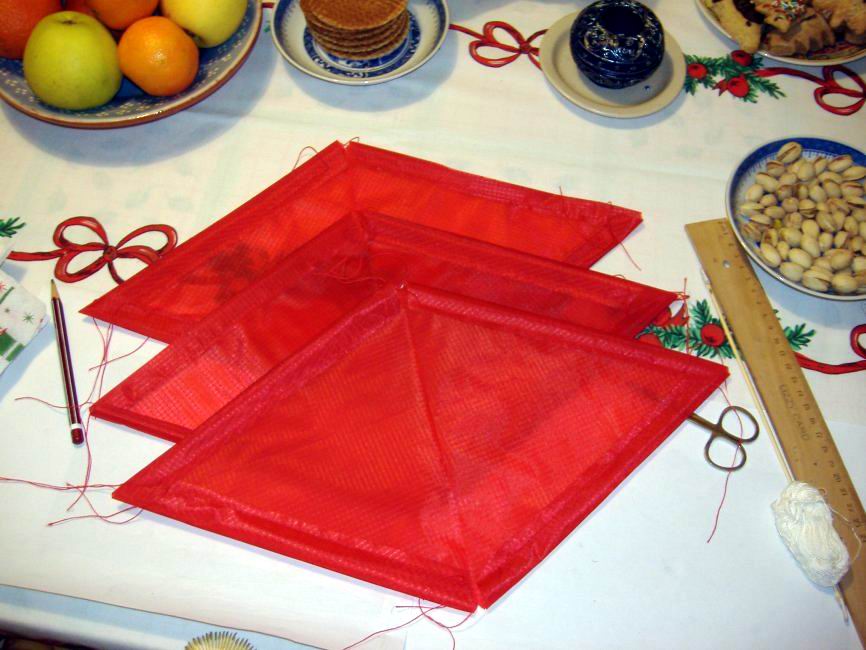
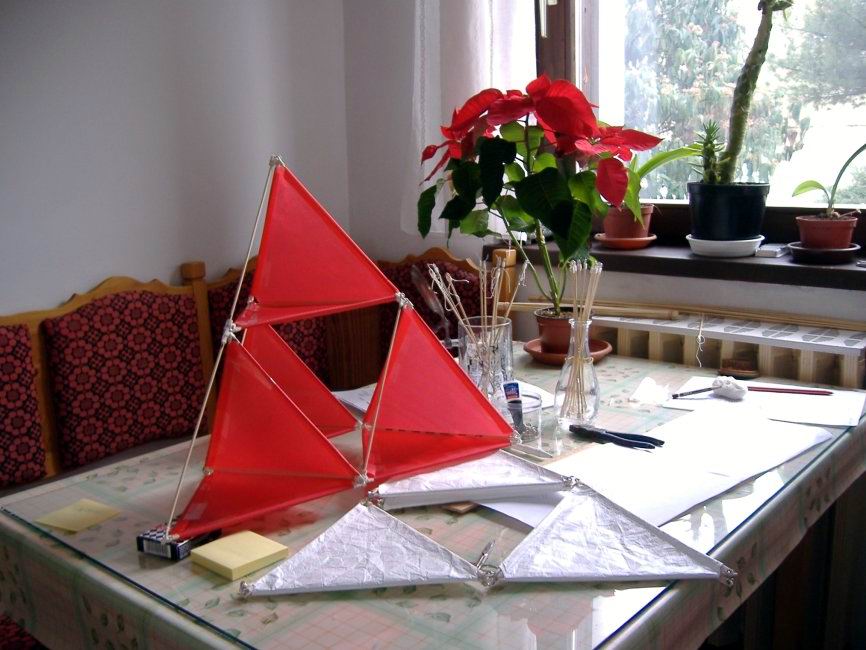
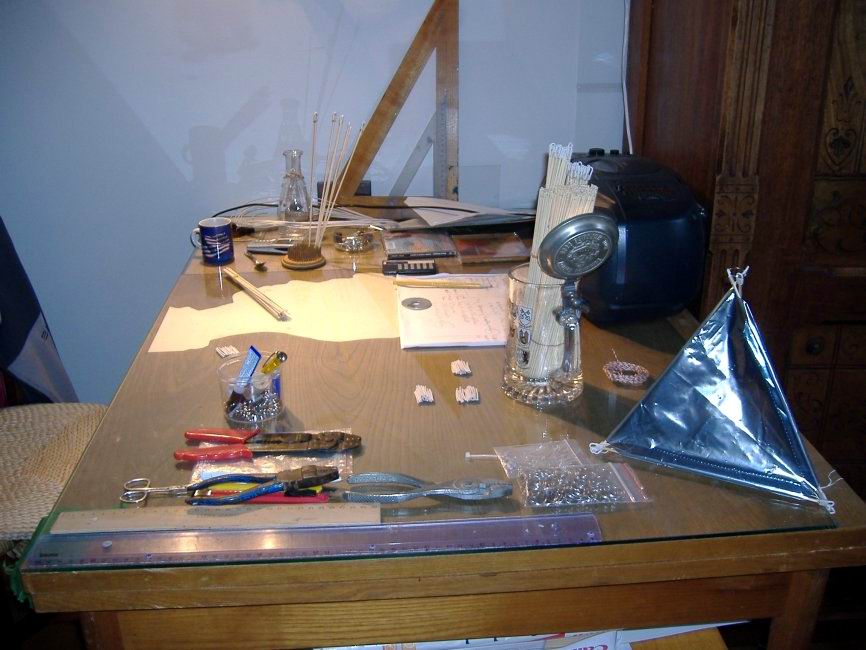 Now I can collapse it, for sure:
Now I can collapse it, for sure:
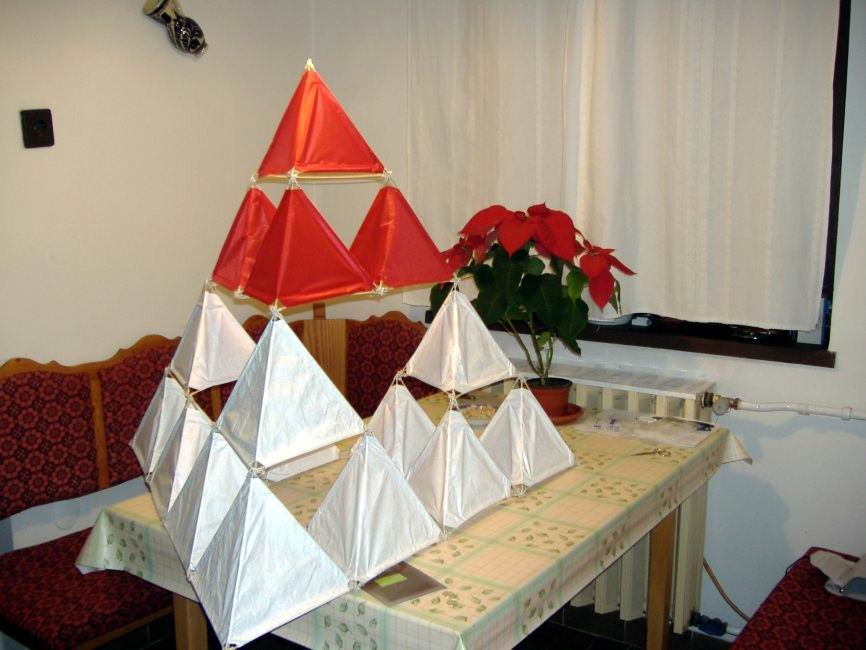 A 16-cell unit,
and collapsed
A 16-cell unit,
and collapsed 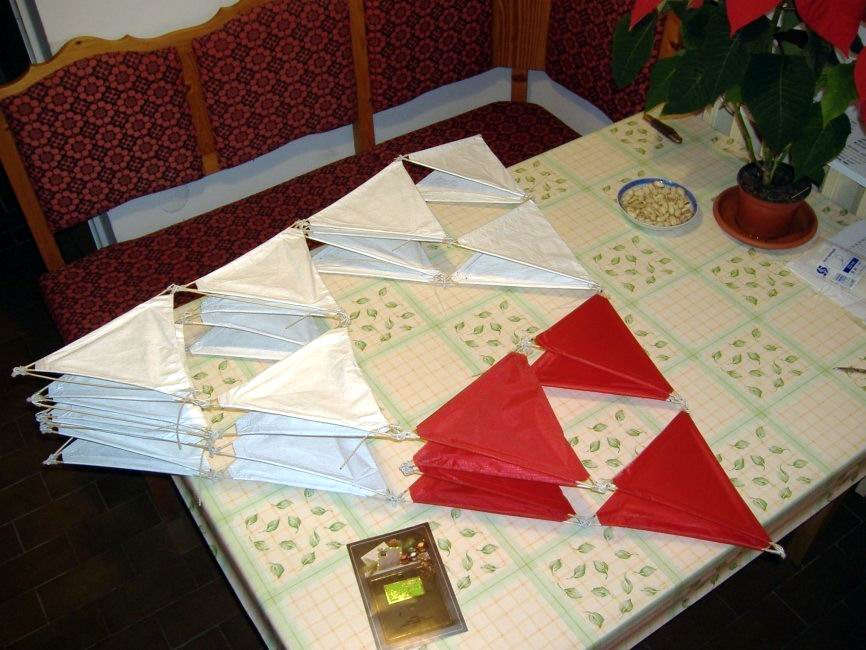
Finally, the full size 64-cell tetrahedron, and collapsed
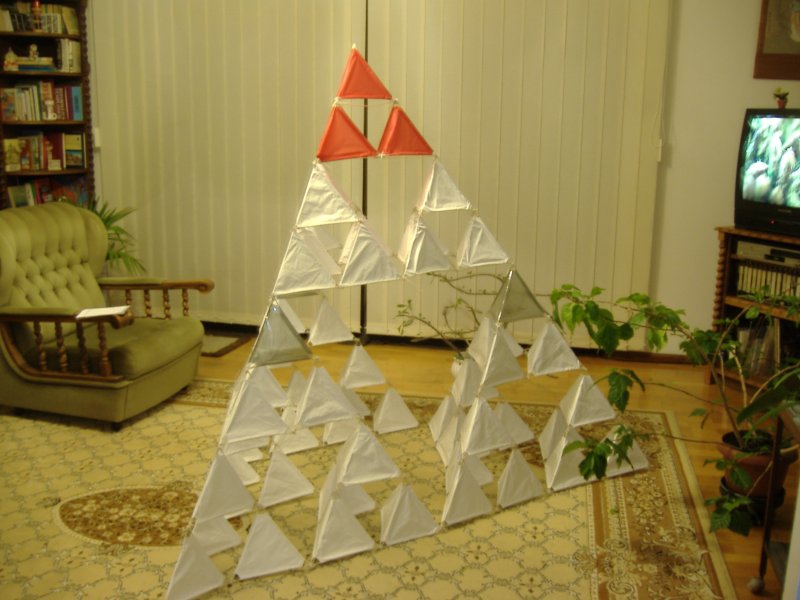
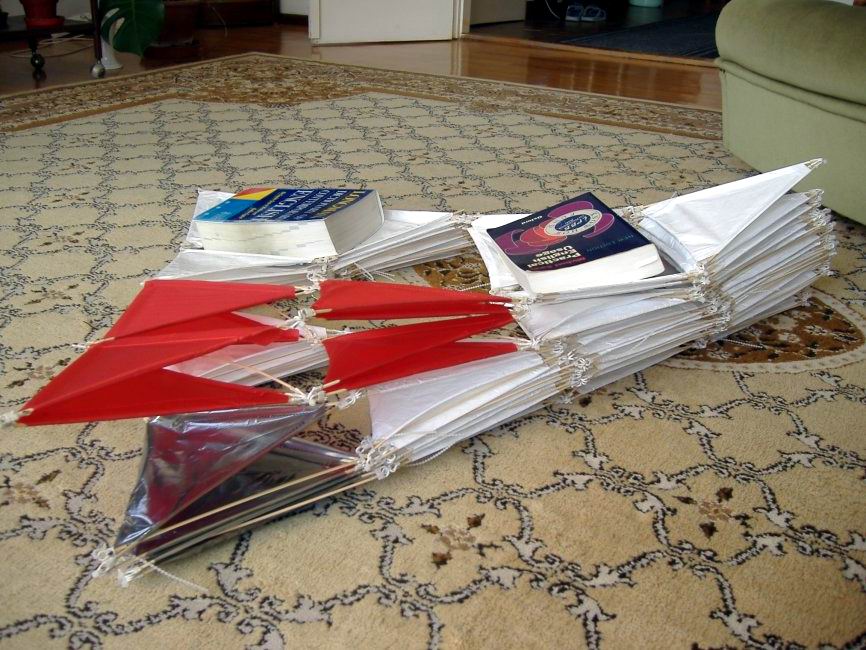
Last modified: 25 Nov., 2007


